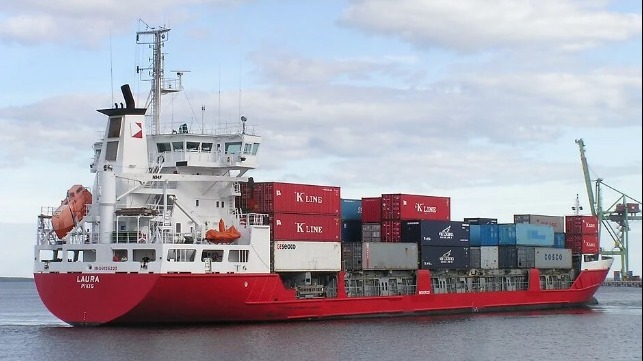Successful CO2 Capture Tests Using Scrubber Fitted on Cargo Ship

Finland’s Langh Tech has become the latest company to report successful early trials of carbon capture and storage on a vessel in normal operations. Seen as a potential technology to address the shipping industry’s need for systems to help existing ships meet the goals for decarbonization, explorations are just beginning on the requirements to make CCS possible at sea.
“Langh Tech conducted several preliminary tests of capturing CO2 emitted by a vessel’s main engine by the means of using an existing closed-loop SOx scrubber system,” the company said in detailing the project. “Langh Tech is also researching methods of extracting the captured CO2 from the process water and looking for ways to store and/or utilize the captured CO2 efficiently both onboard vessels and upon possible discharge to shore.”
The company which designs and manufactures exhaust scrubbers reports the tests were carried out aboard one of its sister companies, Langh Shipping’s vessels utilizing the existing Langh Tech hybrid scrubber installed on board. Langh Tech’s closed-loop scrubbers were installed in 2013 and 2014 on Langh Ship’s five cargo vessels which sail on the Baltic Sea and the North Sea, stopping at major northern European ports.
In the tests, additional alkali was added to the scrubber closed-loop process water to provoke a reaction between the alkali and CO2, effectively capturing the CO2 from the exhaust gas into the process water. Langh says the setup of tests was limited by the capacity of the existing alkali pump, but positive results were observed even with only a slight increase in the alkali dosing. At a main engine load of approximately 85 percent, a 5 percent increase in alkali dosing (over normal level) was able to reduce the measured CO2 emission by 3.3 percent. At 40 percent main engine load, a CO2 emission reduction of nearly 7 percent was observed.
During the tests, the alkali consumption remained at “a reasonable level, and the effect of this on the operating expenses of the vessel would remain feasible,” reports Langh. “Results of the tests are regarded as a tentative proof of concept and additional tests with further increased alkali feed shall be conducted to verify this.”

that matters most
Get the latest maritime news delivered to your inbox daily.
The company believes that the CO2 capture feature could be applied to any Langh Tech closed-loop or hybrid scrubber systems with relatively low cost impact, and requires only minor changes to the existing scrubber system. The process could be performed with readily available alkali products such as NaOH and MgOH2, which are both already being used in many SOx scrubber processes.
